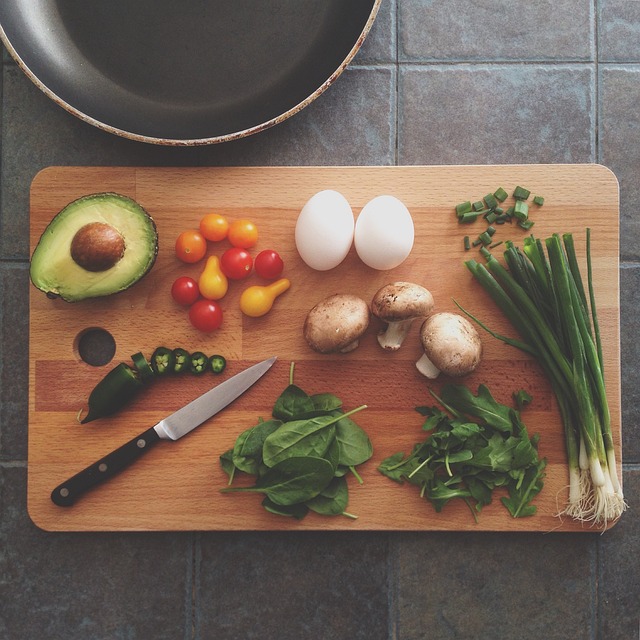Layered kitchen lighting combines task and ambient sources for both functionality and aesthetic appeal. Task lighting, like overhead pendant lights or under-cabinet fixtures, offers direct light over work surfaces, enhancing food safety and quality. Ambient lighting, such as wall sconces or recessed cans, diffuses light throughout the space, creating a balanced illumination that facilitates tasks and transforms the kitchen into a welcoming environment suitable for dining and socializing, with a focus on optimizing task lighting for cooking areas.
Illuminate your kitchen with layered lighting and transform it into a functional and inviting space. In this article, we explore how understanding and implementing layered lighting can enhance your culinary experience. Discover the essential types of task lighting for cooking areas, learn to design a balanced system, and gain practical tips for integrating this game-changer. Elevate your kitchen’s ambiance and efficiency with strategic lighting layers, making everyday tasks more pleasant and your space truly remarkable.
- Understanding Layered Lighting and Its Benefits in the Kitchen
- Essential Types of Task Lighting for Cooking Areas
- Designing a Balanced Kitchen Lighting System
- Tips for Implementing Layered Lighting to Enhance Your Space
Understanding Layered Lighting and Its Benefits in the Kitchen
Layered kitchen lighting involves incorporating multiple sources of illumination, each serving a distinct purpose, to create a well-lit and inviting space. In this setup, task lighting for cooking, such as overhead pendant lights or under-cabinet fixtures, forms the foundation by providing direct, focused light where it’s needed most—over the stovetop or work surface. This ensures clear visibility while preparing meals, enhancing food safety and quality.
Beyond functional benefits, layered lighting adds depth and dimension to the kitchen, transforming it from a mere functional area into a welcoming environment. Strategically placed ambient lighting, like wall sconces or recessed cans, complements task lighting by diffusing light throughout the space. This combination creates a balanced illumination that not only makes tasks easier but also enhances the overall aesthetics of the kitchen, making it a more enjoyable place to spend time.
Essential Types of Task Lighting for Cooking Areas
When it comes to creating a functional and inviting kitchen, proper task lighting for cooking areas is essential. This type of lighting is designed to provide ample illumination directly where it’s needed—over countertops, stovetops, and prep surfaces. A combination of overhead lights, under-cabinet lights, and wall-mounted fixtures creates layered lighting that enhances visibility and safety while preparing meals. Overhead lights, such as suspended pot lights or recessed can lights, offer general brightness for the entire kitchen. Under-cabinet lights add focused task lighting, making it easy to chop vegetables, read recipes, and ensure food is cooked evenly. Wall-mounted fixtures, like swing-arm sconces or ledges with built-in lighting, provide ambient light while also serving as functional task lighting when positioned near cooking zones.
Layered kitchen lighting not only improves functionality but also contributes to a more inviting atmosphere. By strategically placing these essential types of task lighting for cooking areas, you can transform your kitchen from a mere work space into a delightful gathering spot where meals are prepared with ease and enjoyment.
Designing a Balanced Kitchen Lighting System
Designing a balanced kitchen lighting system involves considering both functional and aesthetic elements. Start by incorporating task lighting for cooking areas, such as overhead fixtures or under-cabinet lights, to ensure clear visibility while preparing meals. These targeted lights should be bright enough to guide your hands and eyes without causing strain.
Once the task lighting is in place, layer ambient lighting to create a warm and inviting atmosphere. This can include recessed ceiling lights, pendant lamps over the island, or wall-mounted sconces. Balancing task and ambient lighting ensures you have both the functionality needed for food preparation and the comfort required for dining and socializing.
Tips for Implementing Layered Lighting to Enhance Your Space
Implementing layered lighting in your kitchen is an excellent way to enhance both functionality and aesthetics. Start with essential general lighting, such as a ceiling fixture or recessed lights, to provide ample illumination for the entire space. This serves as the base layer, ensuring every corner is well-lit for everyday tasks.
For an enhanced cooking experience, incorporate task lighting above worktops and countertops. Under-cabinet lights are popular choices, offering direct illumination where you need it most—over the stove, sink, or prep areas. These strategic additions create depth and dimension, transforming your kitchen into a well-lit, inviting space that caters to both form and function.
Layered kitchen lighting not only enhances the aesthetics of your space but also significantly improves functionality. By combining ambient, accent, and task lighting, you create a versatile environment tailored for various kitchen activities. Task lighting for cooking areas, such as under-cabinet lights and overhead pendants, ensures precise illumination during food preparation. With careful design and thoughtful implementation, your kitchen can become a balanced symphony of light, making it not just a room but a vibrant hub of activity.
